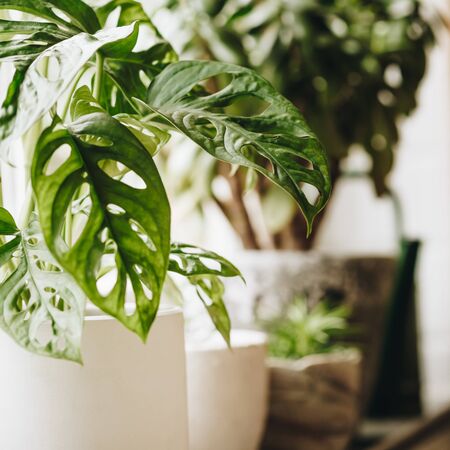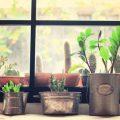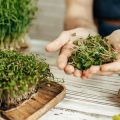1. Understanding the Role of Light
Light is one of the most important factors for indoor plant growth. Plants use light for photosynthesis, a process that converts light energy into food. Without enough light, plants can become weak, leggy, or stop growing altogether. But not all light is the same—different types of light affect your plants in different ways.
Types of Light Sources
When growing plants indoors, youll typically rely on one or more of these three types of light sources: natural sunlight, fluorescent lights, and LED grow lights. Each has its pros and cons depending on your space and the type of plants youre growing.
| Light Source | Advantages | Disadvantages | Best For |
|---|---|---|---|
| Natural Sunlight | Free and full-spectrum; ideal for most plants | Limited by window direction and seasonal changes | Sun-loving plants like succulents and herbs |
| Fluorescent Lights | Affordable and widely available; low heat output | Lower intensity; may not support flowering or fruiting well | Low-light houseplants like pothos or ferns |
| LED Grow Lights | Energy-efficient; customizable spectrum; long-lasting | Higher upfront cost | A wide range of plants, including flowering and fruiting varieties |
Optimizing Light Based on Plant Needs
Different plant species have different light requirements. Some need bright, direct sunlight, while others thrive in low-light conditions. Here’s a quick guide to help you understand what your indoor plants might need:
| Light Level | Description | Examples of Plants |
|---|---|---|
| Bright, Direct Light | At least 6 hours of sun per day near a south- or west-facing window | Cacti, succulents, herbs like basil or rosemary |
| Bright, Indirect Light | Filtered light from a sheer curtain or placed a few feet from a sunny window | Pothos, peace lily, snake plant |
| Low Light | Far from windows or in rooms with minimal natural light | Zamioculcas (ZZ plant), cast iron plant, some ferns |
Tips for Maximizing Light Exposure Indoors
Select the Right Spot in Your Home
The placement of your plants can make a huge difference. South-facing windows offer the most consistent and intense sunlight throughout the day in most U.S. homes. East- and west-facing windows provide moderate light, while north-facing windows usually give very low light.
Rotate Your Plants Regularly
If one side of your plant gets more light than the other, it can start to grow unevenly. Rotating your plants every week helps ensure balanced growth.
Supplement with Artificial Lighting When Needed
If natural sunlight isn’t cutting it—especially during winter months—consider using fluorescent or LED grow lights. These can help maintain healthy growth when daylight hours are short.
Avoid Too Much Direct Sunlight for Sensitive Plants
Certain indoor plants can get sunburned if exposed to too much direct sun. If you notice scorched or faded leaves, try moving them to a spot with indirect light instead.
Your Indoor Garden’s Best Light Strategy Depends on You!
The key is to observe how your plants respond to their environment and make adjustments as needed. With the right lighting setup tailored to your specific space and plant types, you’ll be on your way to creating a thriving indoor garden.
2. Watering Techniques and Plant Hydration
Watering is one of the most important aspects of indoor plant care, but its also where many plant owners make mistakes. Understanding how much water your plants need—and when they need it—can make all the difference between a thriving houseplant and one that struggles to survive.
The Importance of Proper Watering
Just like light and soil, water plays a vital role in plant health. It helps transport nutrients from the soil into the plant, supports photosynthesis, and maintains cell structure. But more doesn’t always mean better. Overwatering can lead to root rot, while underwatering can cause wilting and stunted growth.
Signs of Overwatering vs. Underwatering
| Symptom | Overwatering | Underwatering |
|---|---|---|
| Leaves | Yellowing, mushy, falling off easily | Crispy edges, drooping, dry to touch |
| Soil Condition | Soggy or constantly wet | Dry and pulling away from the pot edges |
| Root Health | Brown or black roots with foul smell | Brittle, dry roots with poor development |
Setting a Watering Schedule
There’s no one-size-fits-all watering schedule because different plants have different needs. Factors like humidity, temperature, light exposure, and pot size all affect how often you should water.
Tips for Creating a Watering Routine:
- Know your plant: Research your specific plant’s watering needs. Succulents need less frequent watering than tropical plants.
- Check the soil: Stick your finger about an inch into the soil. If it feels dry at that depth, it’s time to water.
- Use proper drainage: Always use pots with drainage holes to prevent water from sitting at the bottom.
- Avoid fixed schedules: Instead of watering on the same day each week, observe your plant and environment first.
The Role of Water Quality in Plant Health
The type of water you use matters too. Tap water often contains chlorine, fluoride, or salts that can build up in the soil over time and harm sensitive plants. Consider these options:
| Water Type | Description | Best For |
|---|---|---|
| Tap Water (Left Out Overnight) | Allows chlorine to evaporate before use | Tolerant houseplants like pothos or spider plants |
| Filtered Water | Removes impurities like chlorine and heavy metals | Sensitive plants like calatheas or ferns |
| Rainwater or Distilled Water | Purer water without added chemicals or minerals | Tropical and rare houseplants |
Quick Tip:
If you notice white crust on the topsoil or around the pot rim, its likely a sign of mineral buildup from hard tap water. Flushing the soil occasionally with distilled water can help remove excess salts.
A Simple Rule of Thumb:
“When in doubt, don’t water.” Most houseplants recover better from being slightly dry than from being too wet.
![]()
3. Choosing the Right Soil Mix
Soil isn’t just dirt—it’s a living, breathing environment that directly impacts how well your indoor plants grow. The right soil mix can make all the difference when it comes to healthy roots, proper drainage, and keeping nutrients where your plants need them most. Let’s break down what makes a great soil mix and how to choose or create one tailored to your houseplants.
Understanding Soil Composition
A good indoor potting mix typically includes a combination of components that work together to support plant health. Each ingredient plays a role in water retention, drainage, aeration, and nutrient availability. Here’s a look at some common ingredients:
| Component | Purpose |
|---|---|
| Peat moss or coco coir | Retains moisture while remaining lightweight |
| Perlite or pumice | Improves drainage and aeration |
| Vermiculite | Holds moisture and nutrients for longer periods |
| Compost or worm castings | Adds nutrients and supports beneficial microbes |
Selecting the Right Mix for Your Plant Type
Different plants have different soil needs. For example, succulents prefer fast-draining soil, while tropical houseplants enjoy a more moisture-retentive mix. Here’s a quick guide to help you match soil types with common plant categories:
| Plant Type | Recommended Soil Mix |
|---|---|
| Succulents & Cacti | Sandy mix with extra perlite or coarse sand for fast drainage |
| Tropical Plants (e.g., Monstera, Philodendron) | Rich organic mix with peat/coir, perlite, and compost for balanced moisture |
| Orchids & Epiphytes | Bark-based mix that allows air flow around roots |
| Herbs & Edibles Indoors | Nutrient-rich mix with good drainage and compost content |
Tips for Repotting and Soil Maintenance
When to Repot:
- If roots are growing out of the drainage holes
- If the plant is top-heavy or growth has slowed significantly
- If the soil dries out too quickly or holds water too long
How to Refresh Soil:
- Scoop out the top inch or two of old soil every few months and replace with fresh mix.
- Add slow-release fertilizer if nutrients are depleted.
- Avoid compacted soil—gently loosen it during watering if needed.
The key to thriving houseplants starts below the surface. By understanding what goes into a healthy soil mix and how to maintain it over time, youre giving your indoor garden the foundation it needs to grow strong.
4. Monitoring and Improving Air Quality
Air quality plays a huge role in the health and growth of your indoor plants. While we often focus on light, water, and soil, the air around your plants is just as important. Factors like temperature, humidity, and ventilation affect how well your plants photosynthesize, absorb nutrients, and resist disease.
How Temperature Affects Plant Growth
Most indoor plants thrive in temperatures between 65°F and 75°F during the day and slightly cooler at night. Extreme heat can dry out leaves and soil too quickly, while cold drafts can shock the plant or stunt its growth.
Recommended Temperature Ranges for Common Houseplants
| Plant Type | Ideal Temperature (Day/Night) |
|---|---|
| Fiddle Leaf Fig | 65–75°F / 60–65°F |
| Snake Plant | 70–90°F / 60–70°F |
| Pothos | 65–85°F / 60–70°F |
| Peace Lily | 68–85°F / 60–70°F |
The Role of Humidity
Humidity refers to the amount of moisture in the air. Many tropical houseplants love higher humidity levels—usually between 50% and 60%. When indoor air is too dry, especially during winter months with indoor heating, leaves may brown at the tips or curl.
Tips to Raise Humidity Indoors:
- Use a humidifier: A small room humidifier near your plants can help maintain consistent moisture levels.
- Create a pebble tray: Place a shallow tray filled with water and pebbles under your plant pot so the water evaporates upward.
- Group plants together: Plants naturally release moisture through transpiration; clustering them helps create a more humid microclimate.
Why Ventilation Matters
Good airflow prevents mold, mildew, and pests from taking hold. It also helps regulate temperature and humidity. Without proper ventilation, stagnant air can lead to fungal issues or weak growth due to low carbon dioxide availability.
Ways to Improve Air Circulation:
- Use fans: A small oscillating fan can keep air moving gently around your plants without drying them out.
- Avoid overcrowding: Give each plant enough space so air can move freely between leaves.
- Open windows when possible: Fresh outdoor air brings in natural CO2, which plants need for photosynthesis.
The Benefits of Air Purifiers
If you live in an area with poor outdoor air quality or if youre concerned about dust, smoke, or pet dander affecting your plants, consider using an air purifier. Just make sure it doesn’t produce ozone, which can harm both people and plants.
Create Your Ideal Indoor Plant Climate
The key to healthy indoor plants is balance. Monitor temperature and humidity with inexpensive digital meters, adjust conditions as needed with tools like humidifiers or fans, and always make sure your space has good airflow. With just a few tweaks, you can create a thriving environment where your houseplants will flourish year-round.
5. Integrating Science into Daily Care
Keeping your indoor plants healthy doesn’t require a science degree, but understanding the basics of how light, water, soil, and air quality affect growth can make a big difference. By paying attention to these elements and observing how your plants respond, you can create a care routine that supports thriving greenery in your home.
Light: Matching Plants with the Right Spot
Different plants need different amounts of light. Some love bright, direct sunlight, while others prefer low-light corners. Start by checking the plant tag or doing a quick search to find out what your specific plant needs. Then match it with a suitable spot in your home.
| Light Level | Best Plant Examples | Common Locations |
|---|---|---|
| Bright Direct Light | Cactus, Succulents | South-facing windows |
| Bright Indirect Light | Fiddle Leaf Fig, Monstera | Near east/west-facing windows with sheer curtains |
| Low Light | Snake Plant, ZZ Plant | Interior rooms or north-facing windows |
Water: Understanding Timing and Amounts
Overwatering is one of the most common mistakes in indoor gardening. A good rule of thumb is to check the top inch of soil—if it feels dry, it’s usually time to water. Also consider the season: plants tend to need less water during winter when growth slows down.
Signs Your Plant Needs Water:
- Drooping or curling leaves
- Dry or hard soil pulling away from the pot edges
- Browning leaf tips (in some cases)
Signs You’re Overwatering:
- Mushy stems or yellowing leaves
- Soggy soil days after watering
- Moldy smell or fungus gnats flying around
Soil: The Foundation of Healthy Growth
The right soil mix helps retain moisture while allowing proper drainage. Use potting mixes designed for indoor plants or customize based on your plant type. For example, succulents and cacti need sandy soil, while tropical plants prefer rich, well-aerated mixes.
| Plant Type | Recommended Soil Mix |
|---|---|
| Cacti & Succulents | Sandy mix with perlite or pumice for drainage |
| Tropical Houseplants (e.g., Pothos) | Peat-based mix with coco coir and perlite |
| Aroids (e.g., Monstera) | Aerated mix with bark chips and composted organic matter |
Air Quality: Fresh Air Matters Indoors Too!
Poor air circulation can lead to mold growth and pest problems. Open windows when possible, use a fan for gentle airflow, and avoid placing plants too close together. Also watch humidity—some houseplants like higher humidity levels. A small humidifier can help during dry winters.
Ideal Humidity Ranges:
- Cacti & Succulents: 30–40%
- Tropical Plants: 50–60%
- Ferns & Calatheas: 60%+
Troubleshooting Common Issues Through Observation
Your plant will often tell you if something’s wrong—you just need to know what to look for. Yellowing leaves may mean too much water or not enough light; brown tips might signal low humidity; drooping could be from underwatering or root issues.
Quick Fix Table:
| Symptom | Possible Cause(s) | Suggested Action |
|---|---|---|
| Yellow Leaves | Overwatering, poor drainage, lack of light | Reduce watering; move closer to window; check pot for drainage holes. |
| Browning Tips | Low humidity, salt buildup from fertilizer | Mist plant; flush soil monthly with clean water. |
| Drooping Leaves/Stems | Lack of water OR root rot from overwatering | Check soil moisture; adjust watering schedule accordingly. |
| No New Growth | Lack of nutrients or inadequate light exposure | Add balanced fertilizer monthly during growing season; improve lighting. |
The key to successful indoor gardening is combining scientific knowledge with daily observation. When you understand how light, water, soil, and air work together—and stay tuned into your plants’ behavior—you’ll be better equipped to help them thrive year-round.


